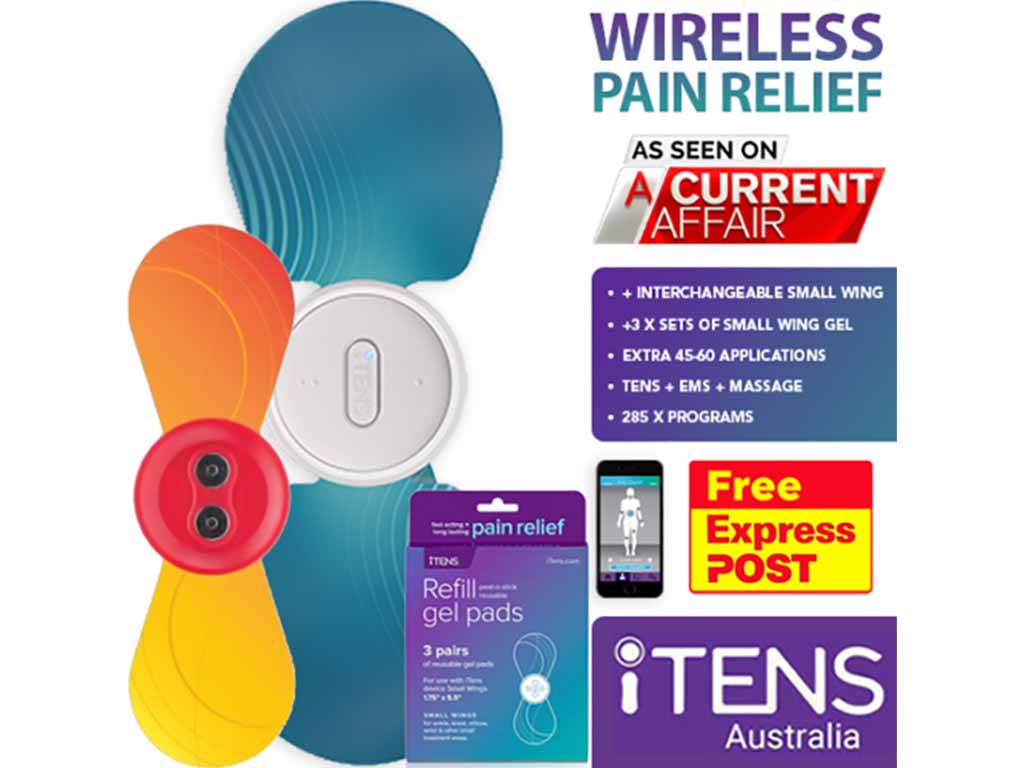
A spinal cord stimulator is a medical device that has gained popularity as an alternative treatment for chronic pain. It aims to alleviate various types of pain, particularly in individuals who have not found effective relief from conservative methods. The device can be implanted to send mild electrical pulses to interfere with pain signals going to the brain. Thus, it can help reduce the sensation of pain in certain areas of the body.
There are various treatment methods to help manage chronic pain, including medicines and physical therapy. In some cases, however, these measures may be insufficient. Hence, health professionals prescribe more advanced interventions, such as using implantable devices. This option can help improve the quality of life for individuals needing long-term pain management. This article will provide a comprehensive overview of the stimulator for the spinal cord, its functions, and the different types of machines.
Jump to a Section:
- What Is a Spinal Cord Stimulator (SCS)?
- Spinal Cord Stimulator – Understanding Chronic Pain
- How Do Spinal Cord Stimulators Work?
- Spinal Cord Stimulator Type – Implantable Pulse Generator (IPG)
- Spinal Cord Stimulator Type – Rechargeable IPG
- Spinal Cord Stimulator Type – Radiofrequency Stimulator
- Spinal Cord Stimulator Surgery: Trial and Implantation
- Spinal Cord Stimulator Post-Operation Recovery
- Guide to Living With a Spinal Cord Stimulator Implant
- Are There Alternatives to Spinal Cord Stimulators?
What Is a Spinal Cord Stimulator (SCS)?
A spinal cord stimulator is a medical device that uses mild electrical impulses implanted in the back. It consists of three main components: a small pulse generator, thin lead wires, and a remote control. The pulse generator is implanted under the skin, usually in the abdomen or buttocks region. The currents generated by the device stimulate specific nerves that are responsible for transmitting pain signals.
In addition, the remote control allows the individual to adjust the intensity and frequency of the electrical pulses. Thus, patients can control the stimulation when they feel pain. However, while spinal stimulation can be effective, it is not suitable for everyone. The need for implanting the device depends on the assessment of a specialist.
It is vital for people considering this treatment to undergo a thorough evaluation to determine if they are suitable candidates for the procedure. Moreover, patients must understand its potential risks and benefits when deciding on this treatment option. Overall, the stimulator offers a long-term solution for individuals suffering from chronic pain.
What Are They Used For?
- Chronic pain: Pain that persists for at least three months from underlying health conditions. Individuals may consider a stimulator when medicines or physical therapy are not effective.
- Ischemic pain: Discomfort or distress caused by inadequate blood supply to tissues or organs, typically due to narrowed or blocked blood vessels.
- Failed back surgery syndrome: Lumbar pain that may originate after surgical intervention in the same area.
- Regional pain syndrome: A debilitating condition that usually affects the limbs after an injury, a stroke, or a heart attack.
- Neuropathic pain: Conditions affecting the nerves such as damage or disorders. They often cause radiating pain.

Spinal Cord Stimulator – Understanding Chronic Pain
Chronic pain refers to any persistent or long-lasting discomfort that lasts for more than three months. Unlike acute pain, which is a normal response to tissue damage or injury, chronic pain carries on even after the initial cause has healed. It can significantly impact the quality of life, limiting the ability to engage in daily activities.
There are various causes of chronic pain, such as degenerative health conditions like arthritis, sciatica, and fibromyalgia. An initial injury like a sprained back or pulled muscle may also cause recurring pain if it results in nerve damage. Furthermore, the neurological basis of chronic pain lies within the intricate network of the nervous system. This includes the transmission of messages in the spinal cord and the brain.
Hence, a spinal cord stimulator plays a crucial role in managing pain. It is believed that electrical stimulation can modulate the perception of pain. It can interrupt pain signals in the spinal cord, which acts as a pathway from the site of injury to the brain.
The Two Main Types of Chronic Pain
There are two main types of chronic pain, namely, nociceptive and neuropathic pain. A common type is nociceptive pain, which occurs when there is actual tissue damage or inflammation. It manifests as a sharp, aching, or throbbing sensation and can be localised at the site of injury.
Neuropathic pain, on the other hand, is caused by damage or dysfunction of the nervous system. This causes the nerve fibres to send incorrect signals to the brain even without any triggering event or injury. In addition, it is often associated with conditions such as nerve compression and diabetes.

How Do Spinal Cord Stimulators Work?
Spinal cord stimulators work by delivering electrical impulses to the spinal cord, which helps modulate the pain intensity. The electrical currents stimulate the nerve fibres, which then block the pain signals from reaching the brain. According to the Gate Control Theory, small doses of electricity can override the spinal nerves that act as gate mechanisms.
Upon activating the device, it creates tingling sensations or paresthesia to help mask the pain. Moreover, the pulse rates are adjustable to suit individual comfort levels. A high-frequency therapy helps reduce the pain perception in a small amount of time. Meanwhile, low-frequency therapy aids in the release of endorphins, the natural painkillers.
Spinal cord stimulation is a minimally invasive and reversible treatment option. It is important to note that this procedure does not cure the cause of the pain or completely eliminate the symptoms. Individuals with the implanted device can turn it on and off at will. They can also adjust the settings and have it removed when they no longer need it.
The Role of Electrical Pulses in Interrupting Pain Signals
One of the primary mechanisms in the spinal cord stimulation system is the use of electrical pulses. They play a significant role in interrupting pain signals within the body. There are various methods to deliver electrical pulses, and one of them is Transcutaneous Electrical Nerve Stimulation (TENS).
As the electrical pulses reach the nearby nerves, they help activate the natural pain relief mechanisms of the body. Overwhelming the nerves overshadow the pain messages, making the brain less aware of them. Additionally, it triggers the release of endorphins. As a result, it can provide temporary relief from chronic and acute pain conditions.

Spinal Cord Stimulator Type – Implantable Pulse Generator (IPG)
Spinal cord stimulators come in several types. One type is the Implantable Pulse Generator (IPG). It consists of a small device that is surgically implanted in the epidural space (between the spinal cord and vertebrae). The IPG delivers small pulses through thin wires called leads to the targeted area in the spinal cord. A surgeon uses fluoroscopic guidance to ensure accurate placement of the leads.
One of the main advantages of the IPG is its programmability. The device has adjustable settings to control the intensity, frequency, and duration of the pulses according to the specific needs of each patient. This allows better targeting of the pain and a more personalised approach to pain management.
Furthermore, healthcare professionals can access the IPG remotely, allowing them to make adjustments without the need for invasive procedures. This flexibility and adaptability make the stimulator a valuable tool in the treatment of long-term pain. However, it is important to be aware of the risks of implanting the device, including infection, bleeding, and device malfunction.
Usage
- After the procedure, a healthcare professional programs the device according to specific needs. This involves adjusting the strength and frequency of electrical impulses to achieve the therapeutic effect.
- The patient can operate and adjust the settings using a remote control device. They can turn the stimulator on and off as needed, increase or decrease the intensity of the electrical pulses, and change other settings to optimise pain relief.
- In case of any issues or changes to the condition, patients should inform their healthcare providers immediately.
- Individuals should maintain regular follow-ups for necessary adjustments to ensure its efficiency.

Spinal Cord Stimulator Type – Rechargeable IPG
A more specific type of spinal cord stimulator is the rechargeable IPG. Its functions are similar to the regular IPG, but it has the added advantage of being rechargeable. Firstly, this type allows for greater flexibility and convenience. Instead of replacing the battery periodically through surgery, they can simply recharge the device at home as needed.
Secondly, it has a longer battery life compared to non-rechargeable devices. This means that users can experience pain relief for a longer duration before needing to recharge the device. Thus, individuals can go on longer periods without having to worry about losing power. Lastly, it eliminates the need for repeated surgeries and reduces the overall cost and inconvenience of frequent battery replacements.
However, patients need to check the battery capacity and perform the recharging process when necessary. Constant monitoring is essential to ensure continuous therapy. Ultimately, the choice of this option may depend on the suitability of the candidate and the recommendation of a pain specialist. The battery life can be a significant factor in deciding which type of device to choose.
Usage
Before using the stimulator, make sure that the battery is fully charged. When the battery gets low, the device sends an alert indicating that a recharge is needed. To recharge, place the charger on the skin over the implanted device. Patients should follow the charging process as instructed by a doctor.
In addition, position and secure the IPG receiver properly on the body. Individuals should use the device following the guidance of a medical professional. Furthermore, users can turn on the device whenever they feel an oncoming pain. Start with a low intensity and gradually increase.

Spinal Cord Stimulator Type – Radiofrequency Stimulator
The radiofrequency (RF) stimulator is another type of spinal cord stimulator that uses an external battery. It uses radiofrequency waves to deliver electrical stimulation, allowing for a more targeted and precise treatment. It also has rechargeable batteries, but this type is better suited for people with lower back pain and leg pain.
The RF stimulator is rarely used nowadays due to newer technologies, such as built-in batteries. It consists of a small generator and electrodes placed near the spine. One of its key benefits is to provide long-lasting pain management with minimal side effects. Patients can also conveniently operate and modify the settings using a remote control device.
Adhering to the instructions is vital for the effective use of the spinal cord stimulation system. Patients must ensure that the device has full battery capacity before commencing its usage. It is important to monitor the battery level closely to prevent interruption or insufficient stimulation. Overall, it can help in the medical management of various pain conditions.
Usage
The usage of the RF stimulator is similar to that of the conventional types. It involves turning on the device and adjusting the settings to a comfortable level. Additionally, it utilises a high-frequency alternating current to interrupt the pain pathways. It is suitable for chronic musculoskeletal conditions, such as joint and tendon pain.
Moreover, there are two kinds of stimulation, including continuous RF and pulsed RF. Continuous RF produces constant stimulation to the affected area, while pulsed RF involves short bursts of power to the targeted nerve. These pain modes can be effective for certain types of pain.

Spinal Cord Stimulator Surgery: Trial and Implantation
The spinal cord stimulator surgery involves two main stages: the trial period and the implantation procedure. Foremost, a medical professional evaluates the medical history of the patient and runs physical examinations and psychological screenings. If deemed appropriate, the individual undergoes a trial period involving the placement of temporary electrodes.
The trial procedure assesses the effectiveness of the electric stimulation in managing or reducing pain. In a successful trial, the patient experiences significant pain relief and improved function. The trial period typically lasts for a week, during which the patient keeps a pain diary to track their symptoms and response to stimulation.
If the trial is successful, the next step is the implantation procedure. This involves placing permanent electrodes along the spinal cord and connecting them to the pulse generator. In this stage, a surgeon threads the thin wires through the spinal canal and attaches them to specific nerves using a suture or skin glue. Afterwards, the doctor programs the stimulator settings to cater to the pain intensity of the patient.
Procedure Summary
- The trials are performed as an outpatient procedure, which can take one to two hours.
- After a successful percutaneous trial, the permanent implantation requires general anaesthesia before making a small incision on the area.
- A surgeon places the pulse generator between the spine and the vertebrae.
- The extension wire connects to the permanent lead to assist in tunnelling from the incision to the overlying skin. In addition, the leads can be implanted within the level of the cervical, thoracic, and lumbar vertebra.
- After the surgery, close monitoring of the patient is essential to ensure proper healing.

Spinal Cord Stimulator Post-Operation Recovery
After the spinal cord stimulator operation, the patient may feel soreness at the incision site. This typically resolves within a few days to weeks as the body adjusts to the presence of the stimulator. Moreover, the recovery period may require rest and minimal treatments, like pain medicines, to alleviate the postoperative pain and discomfort.
The recovery process may involve physical restrictions and wound care management. Avoid activities such as bending, twisting, or heavy lifting that could put a strain on the surgical site. It is also important to keep the area clean and dry to prevent infection. In most cases, it takes two to four weeks for the incision to heal properly.
Aside from medications, patients may employ physical therapy to accelerate their recovery. Certain exercises can provide therapeutic relief, strengthen the muscles, and improve the overall function. Some techniques include electrical stimulation therapy to help reduce inflammation. Lastly, it is crucial to attend scheduled appointments and follow-ups to monitor the healing process.
Possible Complications
While it is minimally invasive, potential complications can happen during or after the implantation procedure. These can vary in severity and occurrence rate. A possible risk is infection at the incision site or around the device. This can occur due to the introduction of bacteria during the surgery, especially if proper wound care and hygiene measures are not followed.
Another possible complication is lead migration or breakage. This includes displacement of the device, hardware malfunction, and spinal fluid leak. In rare cases, there may be nerve damage or paralysis. These risks are minimal and occur in a small percentage of patients.

Guide to Living With a Spinal Cord Stimulator Implant
Living with a spinal cord stimulator implant may take some adjustments and lifestyle changes. Individuals can experience efficient long-term pain management without the adverse risks and side effects of medicines. However, there are certain guidelines to ensure optimal results. Firstly, follow the postoperative instructions, including activity restrictions, to avoid any risks or complications.
Secondly, attend all follow-up appointments. It is crucial to follow regular check-ups to monitor the functioning of the stimulator and address any concerns that may arise. Thirdly, the stimulator may interfere with some electronic machines. For example, it can set off the airport security gates. An identification card can help bypass these measures. Some individuals temporarily switch off their stimulators before passing through.
Additionally, individuals should turn off the device while driving or operating heavy machinery, as this can cause distractions and increase the risk of accidents. Lastly, patient education can increase awareness of the functions and benefits of the device. In so doing, it minimises any unwanted risks and inconvenience from incorrect usage. Patients may experience improved outcomes in pain intensity and occurrences.
Can You Have the Device Removed?
The stimulator device can be removed if it is no longer necessary. There can be various reasons why a doctor suggests removal, such as if it is not providing sufficient pain relief. Another important consideration is if there are complications or adverse effects with using the device.
The removal process is similar to the initial implantation. Only a qualified health practitioner can perform the procedure to prevent risks. It involves making a small incision and carefully disconnecting and removing the leads and the electrodes. Furthermore, recovery is relatively quick, with most patients can return home the next day.

Are There Alternatives to Spinal Cord Stimulators?
While spinal cord stimulators can be effective in managing chronic pain, they may not be suitable for everyone. Fortunately, there are alternative treatments available for individuals. One option is to undergo surgery to fix the underlying cause of the pain, such as a herniated disc or spinal stenosis. It can be more intrusive, but it offers a more permanent pain relief solution.
Physical therapy is a drug-free method that focuses on exercises and stretches to improve strength, flexibility, and mobility. This can be particularly beneficial for individuals with musculoskeletal conditions. It can also minimise the risk of potential injuries. Other alternatives are acupuncture and chiropractic care. These therapies focus on specific techniques aimed at alleviating pain and discomfort.
An innovative and emerging method for pain management is the use of electrical stimulation devices. These are portable devices that are applied externally to the affected area. Thus, it minimises the need for surgery or invasive procedures. One of the common types is TENS therapy. It delivers mild electric currents through electrode pads placed on the skin.
Benefits and Advantages of TENS
- TENS is a drug-free and non-invasive method of pain relief.
- TENS does not have adverse risks or side effects that are common with pain medications, such as nausea, ulcers, and digestive issues.
- A TENS machine is portable and can be used anytime and anywhere, within reason.
- TENS can help relieve acute and chronic pain or health conditions, including nerve pain, joint pain, muscular pain, and musculoskeletal disorders.
- A TENS machine is easy to use, allowing for convenient pain management at home or on the go.
- The TENS electrodes can be applied in most areas of the body, including the back, abdomen, shoulder, arms, and legs.
Conclusion
A spinal cord stimulator is an electronic device that can provide long-term pain relief. It is implanted in the back to deliver electrical signals to the nerves in the spinal cord. This helps block pain signals from reaching the brain, resulting in significant pain intensity reduction. Moreover, the device consists of a small pulse generator, thin wires, and a remote control. Rechargeable units are available, offering longer battery life and convenience.
The surgical procedure is minimally invasive and generally safe. However, the recovery period may last two to four weeks. During this period, patients should avoid physical activities that can strain the incision site. Additionally, certain changes are necessary to adjust to living with an implanted device. Overall, it is vital to discuss the benefits and potential risks with a healthcare provider to determine if spinal cord stimulation is the right treatment option.







